TED: Doris Kim Sung: Metal that breathes - Doris Kim Sung (2012)
by: TEDTalks (video), 2012-10-25 15:00:28 UTC
Modern buildings with floor-to-ceiling windows give spectacular views, but they require a lot of energy to cool. Doris Kim Sung works with thermo-bimetals, smart materials that act more like human skin, dynamically and responsively, and can shade a room from sun and self-ventilate.
 Visions of Resilience: Anglesea 2037
Visions of Resilience: Anglesea 2037
by: VEIL - Victorian Eco Innovation Lab, 2012-10-23 03:05:41 UTC

A local resilience-building project about climate extremes.
Visions of Resilience: Anglesea 2037 is part of a larger research project Transforming Institutions for Climate Extremes. This project is led by Che Biggs at the Victorian Eco-Innovation Lab (VEIL) at the University of Melbourne. It aims to understand how communities and institutions can prepare and become more resilient to disruptive climate conditions. Anglesea was chosen as an ideal case-study site because it faces multiple climate hazards such as fire, drought and sea level rise but it also has a creative community and a strong local identity.
Why this project?
When managing disaster risk, government and private sector organisations often rely heavily on 'probability' or 'expert' assessments of the likely type, extent and frequency of negative impacts. This can come unstuck when disasters occur outside what has been predicted and planned for. Transforming Institutions for Climate Extremes is a response to this problem. It responds to the call for new methods to improve community resilience and help communities improve disaster planning. It seeks to explore how prepared our communities, our decision-makers and decision-making processes are for the challenges of 'new' climate conditions. It will consider what institutional changes are needed to meet those challenges whilst ensuring community ownership.
What is the Visions of Resilience: Anglesea 2037 blog about?
The images and articles you see on the Visions of Resilience: Anglesea 2037 blog are glimpses of possible futures. They depict strategies and ideas about how Anglesea could become more resilient to the more extreme possible impacts of climate change. The ideas represented have been developed from a workshop involving Anglesea community members. In the workshop people were asked to propose adaptation strategies in response to a series of challenging future scenarios that describe Anglesea in the year 2037. These scenarios were built from an assessment of climate model projections, historical records from along the Great Ocean Road and interviews with Anglesea residents. The small number of glimpses you see were combined and synthesised from more than 100 ideas developed in the workshop. Treat them as a window into a range of possible futures that might exist. We encourage you to comment on what is good or not good about the way they respond to challenges from climate change.
Climate change in Anglesea?
Anglesea lies in an area of southern Australia that will be affected by climate change in many ways. Climate models project that the most likely direct impacts will include changes to rainfall (drier but with more intense rainfall events), changes in temperature (warmer with more heatwaves), increasing acidity of oceans and rising sea levels. In-turn, these impacts are expected to affect a whole range of factors including increases in coastal erosion and days of extreme fire danger to increased risk of heat-stroke and changes to when plants flower and birds migrate. Climate Change is the effect of heat from the sun being trapped in the Earth's atmosphere by gases produced by human activity. While some of these gases (like carbon dioxide) are found naturally in the atmosphere, as we increase their concentration above natural levels, they trap more heat from the sun – a bit like an insulation blanket.
You can view the glimpses of a resilient Anglesea in 2037 and comment at www.anglesea2037.com. You can also like our Facebook page to be kept up to date with the project.
GSA Seeks Sustainable Technologies to Test in Federal Buildings
by: Sustainable Design News, 2012-10-26 19:54:56 UTC
All-Natural Insulation with Expanded Cork Boards
by: Eco Geek Latest, 2012-10-16 14:56:54 UTC

Cork is a very versatile material with a great green pedigree. It is considered a rapidly renewable material because the bark of the cork oak can be harvested without killing the tree, allowing repeated cycles of production over the 200+ year lifespan of the tree. While cork has long been an attractive choice for flooring, it is now being used to provide building insulation boards, as well.
Like cork flooring, the cork insulation is also made from granules of cork that are left over after wine corks have been punched out of the bark. Cork granules are treated under heat and pressure to release a natural binder and produce billets of expanded cork which are then cut to size. The expanded cork has an R-value of 3.6 per inch. This isn't as good as the highest performance materials, but is comparable to fiberglass batts, cotton (blue jean insulation), and cellulose insulation.
Expanded cork insulation at present is a comparatively expensive material for insulation. The cost comparison from Building Green (who have an extensive write-up of the material) indicates that cork might be as much as 5 times the cost of a similar amount of polyisocyanurate insulation board, and more than twice as expensive as extruded polystyrene. But the cork does not rely on petrochemicals for its manufacture, and offers an all-natural insulation product that will definitely appeal to some builders and building owners.
In addition to its energy performance, the cork insulation is also highly flame resistant, helps with sound absorbtion, and does not offgas any significant VOCs. From a LEED perspective, it is a very useful material, qualifying as a rapidly renewable material in addition to being manufactured from the waste byproduct of the manufacture of another product (wine corks). Many cork forests are already FSC certified. And, from the perspective of a materials red list, it is 100% natural.
via: Jetson Green
 Greener Plastics or More Greenwash?
Greener Plastics or More Greenwash?
by: Eco Geek Latest, 2012-10-19 17:11:14 UTC

While it may sound like a repeat of the Organic Vinyl April Fools joke from a few years ago, new bio-polymers are getting touted as a green alternative for conventional plastic. While there are some positive aspects to using plant-based feedstock rather than fossil materials, Building Green offers a strong critique of the problems still inherent in bio-PVC.
Avoiding petroleum feedstocks is a good move in general, although the diversion of food crop products is as troubling to us as it is when it is done to produce fuel. Price fluctuations and increased volatility in the oil markets make this a good business strategy for companies producing and using these plastics. But, the core question remains: "Is it greener, or is it merely greenwash?"
Although carbon issues are now closely linked with the broader green movement, carbon isn't the only deciding factor that makes something green or not. With vinyls, as Building Green writes, "The problem is that material sourcing isn't the issue with PVC--and the biggest concerns that have made PVC the subject of more debate than other polymers have come from problems on the "salt" side of the manufacturing process. Dioxins--the most potent cancer-causing chemicals known to science--are produced in large quantity in the manufacture of the vinyl chloride monomer and then again when this chlorinated plastic is burned in incinerators and uncontrolled landfill fires. Getting the polymer from a biobased source merely sugarcoats PVC without addressing the fundamental problem."
Other plastics like PET, the primary material used for carbonated beverage bottles, are also being produced from biomaterial stocks. This is more of an advantage since the resulting products are compatible with current recycling programs instead of needing to be separated as some other bioplastic containers have needed.
image credit: Cjp24/Wikimedia Commons
via: BuildingGreen
 Hue, 'World's Smartest' LED Lightbulb by Philips
Hue, 'World's Smartest' LED Lightbulb by Philips
by: mocoloco, 2012-10-30 04:40:39 UTC



 Home Sweet Cube
Home Sweet Cube
by: Yanko Design, 2012-10-29 07:01:08 UTC
This minimal design by Justin Chong packs everything you need in one 3 meter x 3 meter space! The Cube home features a thoughtfully placed bathroom with a water saving shower and toilet, kitchen with an induction stove and small fridge, eating area for 4, bed for 2 and even a little storage to spare. Polished wood detail, sharp lines and a large skylight give openness and warmth to the otherwise stark space. Gotta love those stairs to the loft bed!
Designer: Justin Chong
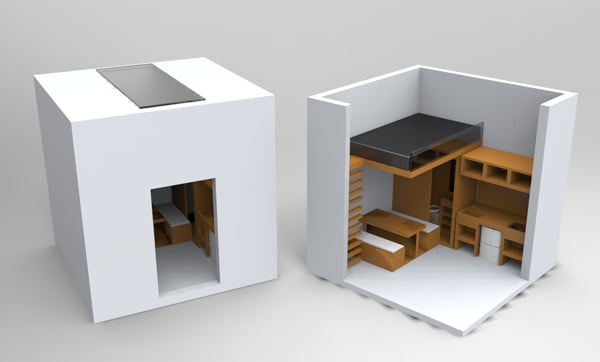
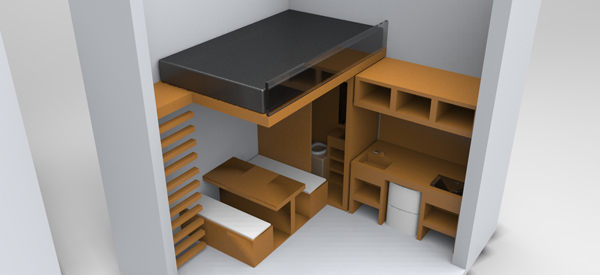
-
Yanko Design
Timeless Designs - Explore wonderful concepts from around the world!
Yanko Design Store - We are about more than just concepts. See what's hot at the YD Store!
(Home Sweet Cube was originally posted on Yanko Design)
Related posts:
- Home Sweet Home
- Sweet Gadgets to NOT die for…
- Bottles Sound So Sweet


 Tap Totally Locked!
Tap Totally Locked!
by: Yanko Design, 2012-10-29 08:11:09 UTC
The Locko is an outdoor water tap meant for installation in gardens and public areas. The concept addresses the need for keeping these faucets secured and locked as unauthorized people may use them. The Locko uses a combination lock system to keep the tap locked and only those who know the combination will be able to use it. This will help prevent water theft (yes this happens!) and wastage.
LOCKO is a 2012 red dot award: design concept winner.
Designers: Arman Emami & Emami Design
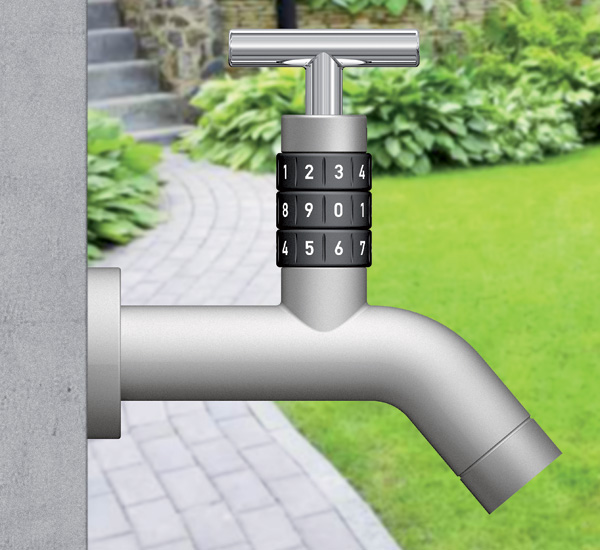


-
Yanko Design
Timeless Designs - Explore wonderful concepts from around the world!
Yanko Design Store - We are about more than just concepts. See what's hot at the YD Store!
(Tap Totally Locked! was originally posted on Yanko Design)
Related posts:
- A Totally Different View
- Totally Oinked By The Coink!
- Totally In Your Ears


 sachiko fukutomi: ukiwa chair
sachiko fukutomi: ukiwa chair
by: Designboom - Weblog, 2012-10-30 11:59:00 UTC
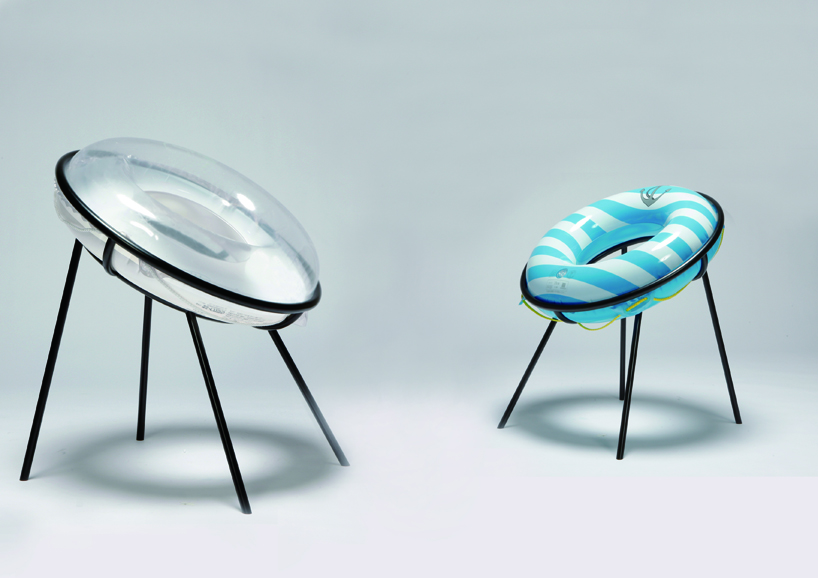
reflecting the notion of being near the sea, the chair provides a comfortable alternative for traditional interior seating.
read more
airless bicycle tires - energy return wheel by britek
by: Designboom - Weblog, 2012-10-31 11:15:00 UTC

developed to eliminate the need of air in bike tires, the system prevents the need for tube replacements and the common occurrence of punctures
read more



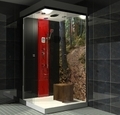


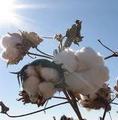

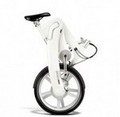
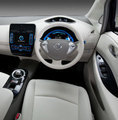
Comments by our Users
Be the first to write a comment for this item.